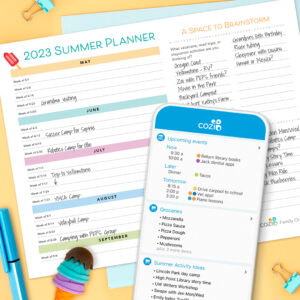As a housewife, managing the daily routine of your family can be a daunting task. With multiple family members to care for, household chores to attend to, and personal responsibilities to fulfill, it’s easy to feel overwhelmed. Creating a family schedule can help streamline your day, reduce stress, and ensure that everyone’s needs are met. In this article, we’ll explore the importance of creating a family schedule and provide practical tips on how to create one that works for everyone.
Why Create a Family Schedule?
Creating a family schedule is essential for several reasons:
- Reduces Stress: A schedule helps you prioritize tasks, allowing you to tackle the most important tasks first and reduce feelings of overwhelm.
- Improves Communication: A schedule helps family members understand each other’s needs and expectations, reducing misunderstandings and conflicts.
- Increases Efficiency: A schedule helps you allocate time effectively, ensuring that tasks are completed efficiently and reducing the likelihood of forgotten tasks.
- Enhances Family Bonding: A schedule can include quality time activities, such as family game nights or outings, promoting bonding and creating lasting memories.
How to Create a Family Schedule that Works for Everyone
- Gather Input: Involve all family members in the scheduling process to ensure everyone’s needs are considered. Ask each family member to share their daily routines, preferences, and priorities.
- Identify Priorities: Determine the most important tasks and activities for each family member. This will help you allocate time and resources effectively.
- Create a Master Schedule: Use a calendar, planner, or app to create a master schedule that incorporates everyone’s priorities. Break down larger tasks into smaller, manageable chunks.
- Set Realistic Goals: Be realistic about what can be accomplished in a day. Don’t overload the schedule with too many tasks, as this can lead to burnout and frustration.
- Leave Buffer Time: Leave some buffer time between tasks to account for unexpected interruptions or delays.
- Be Flexible: Life is unpredictable, and schedules can change. Be prepared to adjust the schedule as needed to accommodate unexpected events or changes.
- Communicate Effectively: Regularly review and discuss the schedule with family members to ensure everyone is on the same page.
- Review and Revise: Regularly review the schedule and make revisions as needed. This will help you identify areas for improvement and make adjustments to optimize the schedule.
Tips for Creating a Family Schedule that Works for Everyone
- Use a Shared Calendar: Use a shared digital calendar or planner to keep everyone on the same page.
- Color-Code Tasks: Use different colors to categorize tasks, such as work, school, or personal activities.
- Create a Routine: Establish a daily routine for regular tasks, such as meal times, homework, or chores.
- Schedule Downtime: Make time for relaxation and self-care to reduce stress and increase productivity.
- Involve Children: Encourage children to take ownership of their schedules by allowing them to prioritize their own tasks and activities.
- Be Patient: Creating a family schedule takes time and effort. Be patient and flexible, and remember that it’s okay to make adjustments as needed.
Conclusion
Creating a family schedule is a crucial step in managing the daily routine of your family. By following these tips and guidelines, you can create a schedule that works for everyone, reducing stress, improving communication, and increasing efficiency. Remember to be flexible, patient, and open to adjustments as needed. With a well-crafted family schedule, you’ll be better equipped to manage the demands of family life and create lasting memories with your loved ones.












